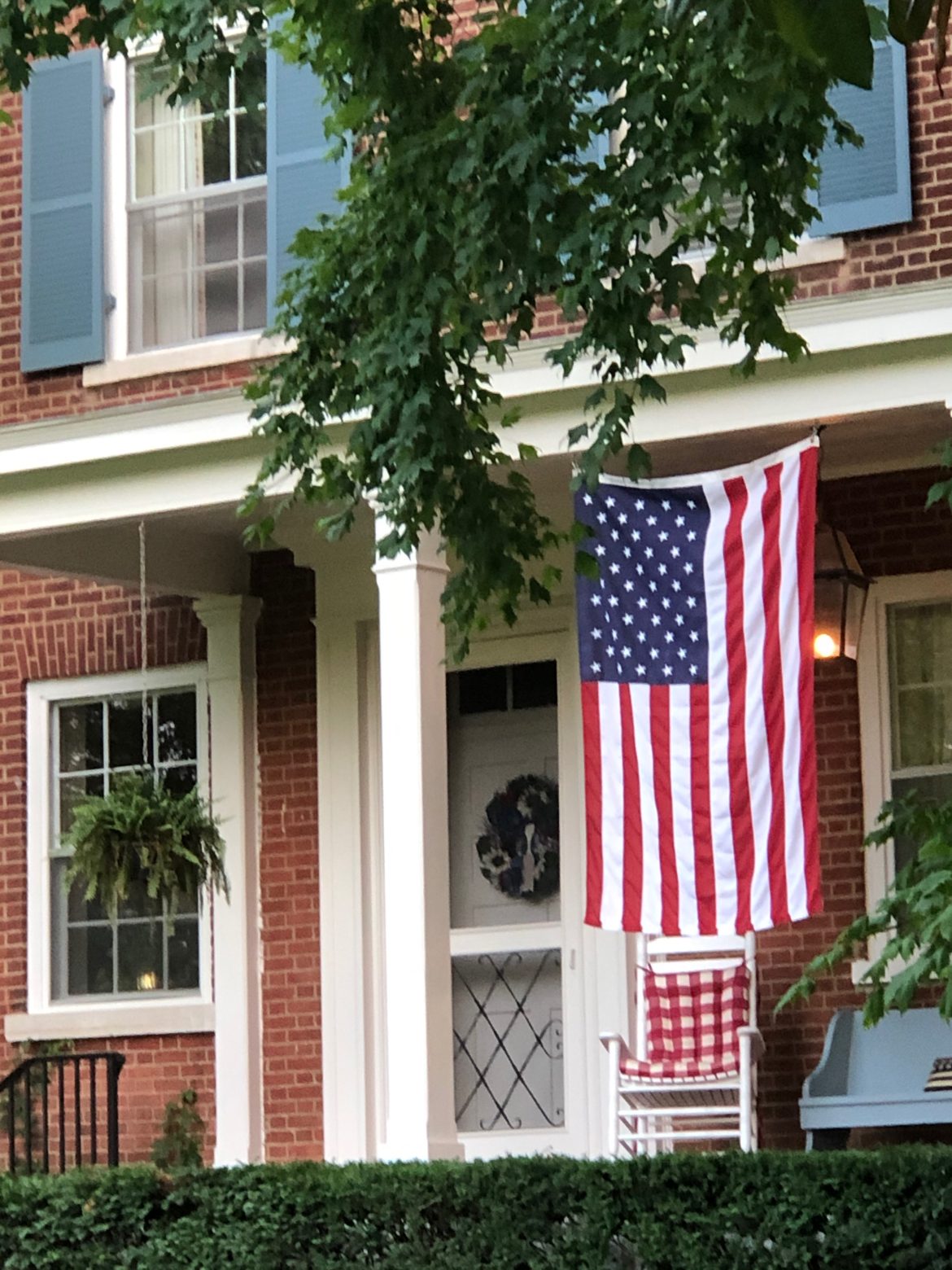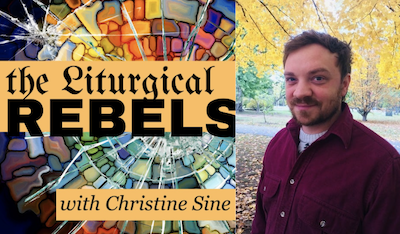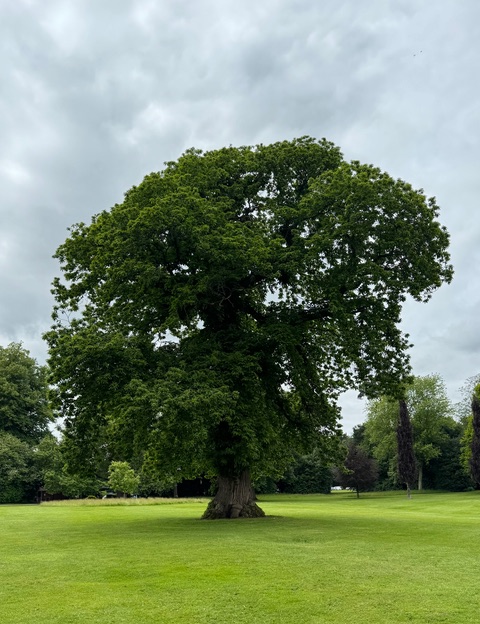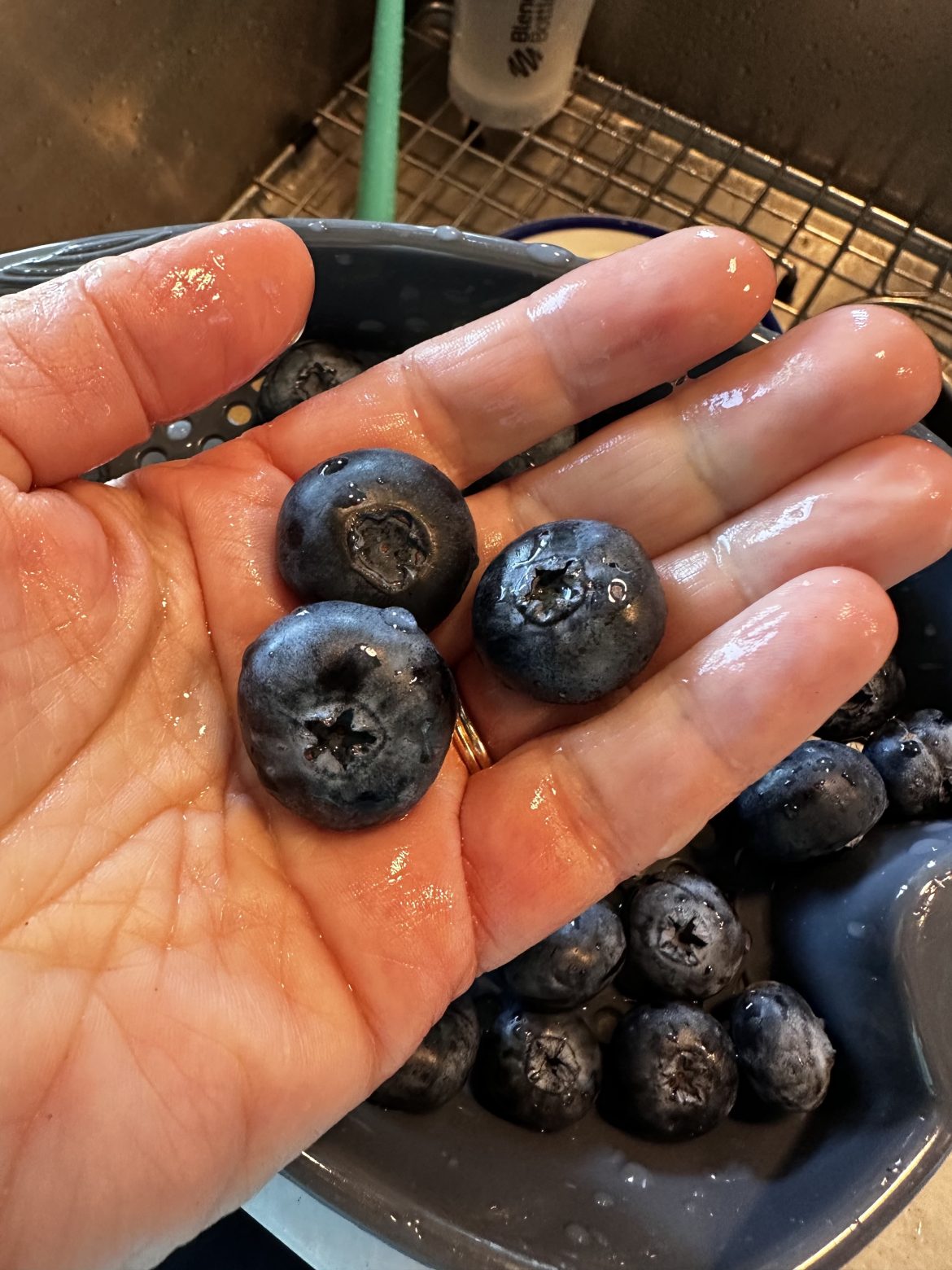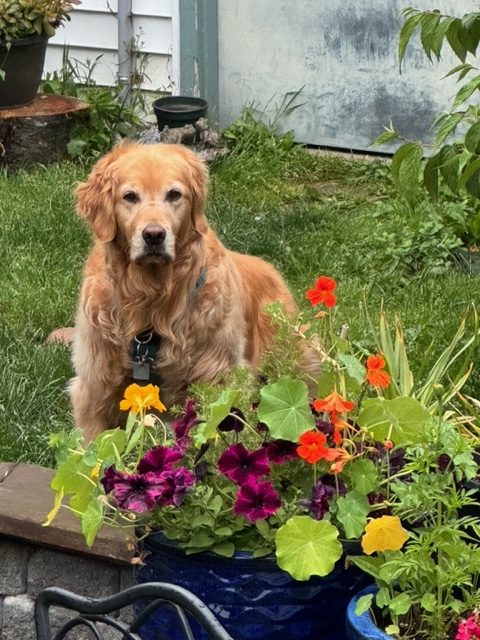by Christine Sine
Summer has arrived with a vengeance here in North America. Canada Day and Independence Day were celebrated this last week not just with BBQs, picnics at the beach and fireworks, but also with preparations for heatwaves and record temperatures. Some are preparing for the first major hurricane of the 2024 Atlantic hurricane season which swept through the Caribbean over the last few days and is now hitting Texas. The rhythms and rituals of summer are intertwined with the changing weather and its impact on our lives and not surprisingly, in the last few days, has made me think about the events that most influence the rhythms and rituals of my life.
Its was the seasonal changes of the agricultural year that led to the development of the liturgical calendar which we still use for our religious observances. Unfortunately these symbols seem to be less relevant for many today.
A couple of years ago I asked my Southern Hemisphere friends what symbols and rhythms gave meaning to the seasons of the liturgical year for them. I thoroughly enjoyed their responses which helped me reimagine the symbols and celebrations I find most meaningful as the world turns and the seasons change.
Evidently when Europeans moved to the Southern Hemisphere they took the symbols and celebrations they were familiar with along because these gave them security and connection. Winter symbols and rituals for Christmas made them feel at home when they celebrated Christmas in the middle of summer. Yet these symbols and the rituals they were encouraged to use didn’t help them connect to their new earthly home and its seasons. This disconnect meant that their faith became more and more disconnected from the world in which they lived. When I wrote about this a couple of years ago, Rodney Marsh, from Western Australia commented:
This will require local, embodied, spiritual practices and symbols to generate the celebration of Christ’s presence and the cycle of the Church year to have a local flavour which reveals Jesus’ birth, death and resurrection and the gift of the Spirit happened ‘where I live’. Jesus died and rose again to establish his Kingdom not only in Jerusalem but also among the “dark Satanic Mills … In England’s green & pleasant Land.” and in “our home … girt by sea”. I think this task will require attention to indigenous wisdom and its contact with the land, waters and sky of each place in this wide world. This spiritual task is vital and fundamental for to stop us destroying the Earth by warming the atmosphere will require not only solar farms and windmills but a change of heart and spiritual practices are the only way (I have found) to change my heart.
I may not live in the Southern Hemisphere any more but I wonder if we suffer from the same disconnect wherever we live. It’s probable that Advent wreaths originate from the custom of removing wagon wheels over the winter – hanging them on the walls and then decorating them with greenery and candles. Now I don’t know about you but I don’t remove my car wheels over the winter and much as I love poinsettias at Christmas and have no desire to let go of them, I know they don’t help me connect to the beautiful Pacific NW where I live. I must confess, as I share in my book Digging Deeper, I soon became bored with Advent wreaths too, and went looking for other symbols and practices to help connect me to where I live. Perhaps part of that boredom related to the fact that I wanted symbols that I could relate too more easily. I have done the same for Easter, and for other celebrations that are important to me. others create seasonal mandalas for the same reason.
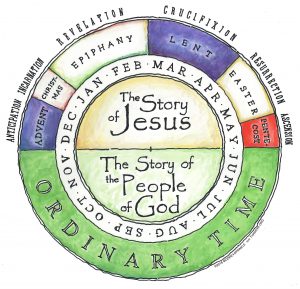
Third Church, used with permission
My journey into seasonal contemplative gardens started with me using them to replace Advent wreaths. These gardens first held succulents, but increasing contain local plants and involve seasonal activities, like sprinkling seeds on the soil and watching it germinate and grow at Easter. They also often connect to world events like the bushfires in Australia or the wars in Ukraine and Gaza as well as to seasonal activities like beach combing in summer.
Now I wonder how I can make more of my seasonal celebrations link me to the world in which I live. One of the privileges of living in the Pacific NW is that so much of our Christmas greenery is locally grown. I love walking through a Christmas tree lot at the beginning of the season inhaling the wonderful fragrance of pine leaves One year I even got to go out to a Christmas tree farm and help cut down our own tree – a wonderful way to connect to this part of God’s good earth in which I live.
I don’t want Christmas and Easter to be my only meaningful celebrations. My current summer ritual which I talked about a couple of weeks ago – reciting a prayer to welcome God into my day and then coming for an awe and wonder walk around my garden, certainly help. In fact my awe and wonder walks help me with connect to the land at all seasons of the year. I love to wander our neighbourhood drinking in the beauty of the gardens around me. I notice what has been planted, what is flowering, and in the autumn, which leaves are changing colour. Unfortunately, most gardens contain little local flora apart from pine trees, so I need the occasional good walk in one of our local forests to really appreciate the seasonal beauty of this part of the world.
Looking for sights and sounds and objects that connect me to the four seasons of the year is now one of my favourite pastimes and my list of possible ways to link my spiritual practices more firmly to God’s good earth grows all the time.
Welcoming the day with a short prayer at sunrise and saying goodnight with another as I go to bed is one way, as I shared last week. Collecting pine cones and leaves that fall from the deciduous trees and then decorating them to place around the house in the autumn is another . Some of my friends are foragers – searching for mushrooms or picking local fruit like huckleberries provide wonderful seasonal forays into the natural landscape that help to make us feel at home in the land in which we live. Or like me you might enjoy beach combing in the summer. Listening to the waves and enjoying an oceanside stroll is a wonderful summer ritual. I am also currently investigating how I can introduce more local plants into my own garden as I think this is an important way to anchor ourselves in the place in which we live and its seasonal changes.
We are designed to be linked with the earth, to nurture and steward it and there is no better way to do that than by connecting our celebrations to rituals and rhythms in our natural neighbourhood. This doesn’t mean that we throw out all our established seasonal traditions, but it does mean we should intentionally think about other symbols and rhythms that could connect us to God’s good earth and the seasonal changes in the place where we live.
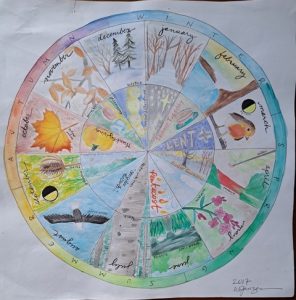
Wendy Janzen, paster of Burning Bush Forest Church in Eastern Canada, developed an eco-spirituality practice that I also find helpful in this exploration – a Phrenology wheel, which she shared with us on Godspacelight a couple. of years ago. I highly recommend reading about this and applying it to your own life.
This kind of exploration and creative experimentation provides an exciting journey of discovery and I hope you will join me on it.
What are habits and rhythms that help you connect your faith to the place in which you live and to the seasons in which you find yourself?
What could you do to strengthen these habits or create new ones?
Who could help you on your journey?
You might like to listen to the YouTube video session I recorded a couple of years ago on rhythms and rituals and spend some time considering your own rhythms and rituals. I would love to hear the new rhythms or rituals you consider.
It’s July… i am not sure how that’s possible. But here we are. I honestly have dreaded 2024 because of the election. So the fact that we are now in the second half of the year, it’s rather daunting . It’s been hard to get excited about a year that holds so much possibility for trauma.
Back in February, Rob and I escaped to Michigan for some winter weather and water views . We needed a break from the craziness of TN politics and we needed water. While praying for America in frustration & despair, a huge bald eagle flew by the window. Now I’ve never seen a bald eagle in Michigan, the boys have and they call him The General. Jesus used the General, the eagle, as a tangible symbol to remind me that HE IS STILL IN CONTROL! Despite all the craziness, Jesus is still in control and still present here.
So I have decided to make July a month of intentional prayer for America. I have prayed and i do pray for this country but honestly I often have lost hope & gotten angry rather than prayerful. I am going to use all the flags I see around town, as reminders to pray!
Canada just celebrated Canada Day on the first of July, and the UK just had a big election yesterday.
I feel like all of our countries could use our prayers for more love and less hatred, for
compassion, for deliverance from evil! For wisdom & clarity rather than conspiracy!
And for peace!
Lord help us to love our neighbors as you love them!
Lord in your mercy! Hear our prayer!
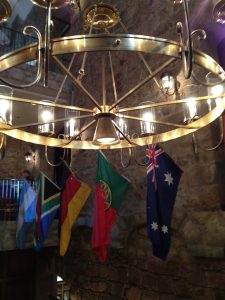
When you see your country’s flag this month, use it as a reminder to pray!
Be grateful for the things that are unique to your land.
Be mindful of all the gifts and blessings.
Pray for leaders who can lead with compassion and honesty.
Pray for peace and compassion.
Pray for ways to help bring that love and compassion into your world.
And love the people that Jesus has put in your pathway today.
AMEN
PRACTICE 1:Use the flags you see to pray for your country and for us here in America please!
PRACTICE 2: Show God’s love in a practical way! Yesterday, I decided to bake cookies to share with some of my neighbors. It was a practical way to love them on a day when I felt conflicted. What ways can you show love to your neighbors this July?
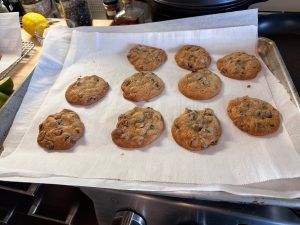
Christine Sine talks to Kelly Latimore about life, God and iconography for Episode 11 of Liturgical Rebels.
Kelly Latimore, an iconographer, discusses his approach to iconography and the power of using art to address uncomfortable subjects. He combines classic Orthodox iconography with figures representing the marginalized and oppressed and believes icons to be windows to God and reflections of the image of God within us. Kelly and Christine discuss how his spirituality shifted from transcendence to engagement and embodiment through his experiences on a farm and working with the homeless. Latimore also discusses the response he has received from traditional iconographers and the importance of creating art that challenges and creates dialogue.
Takeaways
- Art, specifically icons, can be a powerful tool for addressing uncomfortable subjects and representing the marginalized and oppressed.
- Icons serve as windows to God and reflections of the image of God within us.
- Creating art that challenges traditional norms and creates dialogue is important for fostering change.
- Observing and contemplating artwork in community can lead to profound experiences and new ways of seeing God.
- The purpose of church art is to teach us how to observe and be still, fostering a deeper connection with God.
Kelly Latimore is an artist and iconographer from St. Louis, MO. He started painting icons in 2010 while a member of the Common Friars, a small monastic farming community in Athens, Ohio. Latimore’s icons often mix classic orthodox iconographic imagery with figures representing the marginalized and the oppressed among us here and now. Latimore’s icon “Refugees: La Sagrada Familia,” in which the flight to Egypt is interpreted as Latinx immigrants crossing the desert, adorns the cover of Pope Francis’s book “A Stranger and You Welcomed Me.” Latimore has also created a diverse array of icons of unexpected saints such as poet Mary Oliver, author James Baldwin, and TV host Mr. Rogers.
Tomorrow is Independence Day here in the U.S., a day that I have very ambivalent feelings about. First, I think we are all called to be interdependent not independent. I have written about this on several occasions. Second all too often, we are encouraged to tell American history in a manner that overlooks the destruction wrought along the way especially to Native Americans and black Americans many of whom still lack the freedoms that this day purports to proclaim. We like to ignore or demonize those who are not allowed access to the opportunity Americans love to proclaim.
Last week, Kendall Vanderslice of Edible Theology shared some historic recipes for Fourth of July. What a fun idea, I thought and went looking for my old cookbooks. I have quite a collection, including an 1886 White House Cookbook published when France Folsom Cleveland was First Lady of the U.S. Breakfast included raspberries and cream but also fried chicken, cornmeal muffins, scrambled eggs and tomatoes, potatoes and toast. Dinner was Clam soup, boiled cod with lobster sauce, roast lamb, new potatoes, green peas, spinach with eggs, cucumbers, chicken patties, Naples biscuits, vanilla ice cream, chocolate macaroons, and strawberries, with a supper of cold sliced lamb, crab pie, watercress salad, sponge cake and blackberries. By the end of the day I suspect people could hardly move.
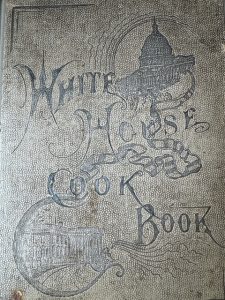
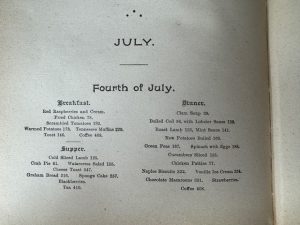
Another fascinating cookbook I came across was Tastes of Liberty: A Celebration of Great Ethnic Cooking from 1985. Produced by Chateau Ste. Michelle, one of Washington State’s pioneer wine producers, it celebrates the cooking of the various ethnic groups that passed through Ellis Island. Italian, German, Greek, British, Eastern European, Jewish, Iberian, Scandinavian and French, it shares tidbits about their journeys and some of their favourite recipes. I think it is a wonderful tribute to the ethnic diversity of America which is what we really should celebrate on July 4th.
This week my Meditation Monday: Finding the Mother Tree also expresses some of my radical viewpoints as I ask “What was the tree of life in the garden of Eden really like?” My theory is that it was more like a giant mother tree than an apple tree. I encourage you to read it and share your opinion.
My Spiritual Practice: Welcome the Day – A Prayer and A Practice in which I share my new summer ritual and welcoming prayer has been very popular. I think all of us need rituals like this to help anchor our faith and ground us during the day and I encourage you, not just to adopt my practice but to adapt it for your own use. Don’t forget this practice only appears on Substack so if you are not yet subscribed I highly encourage you to do so.
Lilly Lewin’s Freerange Friday: Noticing the Abundance of God is an important post for all of us. Working in the garden always reminds me that in God’s economy there is always enough. We just need to notice it and be willing to share it. I love her question “What reminds you of the ABUNDANCE of GOD?”
Today the 11th episode of Liturgical Rebels was published. This is the long awaited interview with iconographer Kelly Latimore whose icon Jesus Under the Rubble impacted many of us profoundly during Advent last year. Other compelling images include the Holy family as immigrants and as refugees. It is a fantastic episode. Or if you have not yet connected to The Liturgical Rebels perhaps you would like to use the summer to get caught up. Check out all the interviews including Naomi Lawrence, Brian McLaren, Shane Claiborne and Scott Erickson here.
Once again there have been very few new posts this week on Godspacelight, however here are a few suggestions of old ones to revisit. This week I thought I would focus on hospitality. Some of you might like to revisit this hospitality reading list. One of my favourite posts on hospitality is my Meditation Monday: Guests of God, Hosts to the world in which I consider not just that we are hosts to the world but also hosts to God. It is a concept that has changed the way I look at the world. Two other authors who write well about hospitality are Lynne Baab with her post Listening and Hospitality. As she says – listening is one of the key skills of hospitality. Elaine Breckenridge has compiled several posts on hospitality including Disguises of God’s Wild Hospitality.
I hope you enjoy this revisiting of posts from the past. So often they are here one moment and then gone the next and I think it is important to revisit them on occasion.
Let me finish with this prayer that I wrote several years ago for American Independence Day:
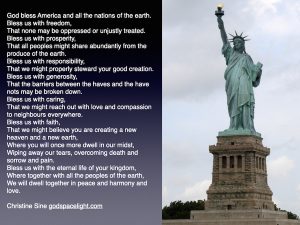
by Christine Sine
Have you ever wondered what the tree of life in the garden of Eden really looked like? The commonest image we see is of an apple tree, but I wonder if it was more like the mother trees that we increasingly recognize as forest nodes, connecting extensively through mycelial filaments to surrounding trees. As Suzanne Simard explains in her book Finding the Mother Tree, sometimes an ancient mother tree is connected to hundreds of young saplings which they communicate with and help sustain through the fungal network that is part of the forest.
The Wood Wide Web is a busy network, where the fungal links serve as pathways for the back-and-forth transport of carbon, water, and nutrients among trees. Among the shifting dynamics of growing trees, the taller, replete, and illuminated elders can shuttle a net amount of resources along a source- sink gradient to shorter, shaded, understory trees. (Dr Suzanne Simard The Mother Project)
We tend to think of trees as individual units, but they are actually part of a large, interconnected community interacting with their own and other species, including forming kin relationships with their genetic relatives. I can imagine that the tree of life in the garden of Eden was like this, connected not just to other trees in the garden but to all the vegetation that made up the garden, sharing wisdom, encouraging growth and keeping healthy.
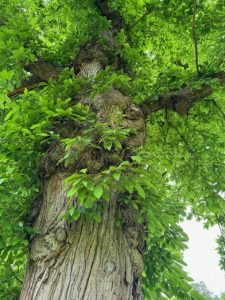
Giant oak Bowood house
In my recent trip to Britain I fell in love with the huge oak trees that dotted the landscapes in some of the parks we visited. They were part of my inspiration for this post. Some of them are more than three hundred years old. What disturbed me was that many of these trees stood in solitary splendour no longer a part of the great forests that once surrounded them. I suspect that some of them once formed part of the same kind of network that Dr Suzanne Simard documents in British Columbia. Maybe that fruit we were told not to eat in the garden of Eden wasn’t an apple but an acorn.
Oak trees once thrived across the whole of the Northern hemisphere. In California for example, their densely nutritious and neatly packaged, acorns provide a staple food source for deer, wild turkeys, squirrels, raccoons, rabbits, and dozens of bird species. Humans, too, have relied on them for over 4,000 years (4). California’s indigenous people dedicated much of their time to harvesting, processing, storing, and cooking acorns. Acorns were collected in the fall, leeched to remove bitter tannins, laid to dry in the sun, and stored in large granary baskets. Upon preparation, they were cracked out of their shells, peeled from the thin, paperlike skin around them, and pounded into a flour. The Tamyen Ohlone people of the Santa Clara Valley used this flour to make variations of mush, bread, or soup, which rounded out a nutritious diet of wild onion, carrots, blackberries, and trout. Today, oaks and their life-giving acorns are a sacred connection to history, culture, and sense of place for California’s native communities. (Mother Oak, Father Time)
Tragically oak trees, like many large trees are under attack, not just from humans but also from tiny but powerful creatures by the name of Phytophthora. While many species of Phytophthora affect and kill oaks, one of the most well known is Phytophthora ramorum, the pathogenic water mold that causes Sudden Oak Death (SOD). Some postulate that part of the reason for this increasing vulnerability is their isolation. Trees that are meant to be part of community don’t do well alone. Just like us. We are created to be part of community and don’t do well when we are isolated from each other. Social relationships and connections are one of the key factors that improve mental health and help us to age well.
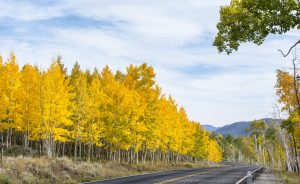
Pando Aspen
One of the most fascinating giant trees in the world is in Utah. It is a one tree aspen forest called Pando which is believed to be the largest, most dense organism ever found at nearly 13 million pounds. The clone spreads over 106 acres, consisting of over 40,000 individual trees connected through one root system. The exact age of the clone and its root system is difficult to calculate, but it is estimated to have started at the end of the last ice age. Some of the trees are over 130 years old. It was first recognized by researchers in the 1970s and more recently proven by geneticists. Its massive size, weight, and prehistoric age have caused worldwide fame. It too is showing signs of decline. due to a lack of regeneration, along with insects and disease.
In Revelation 22: 1-5 we read about another giant tree, the tree of life in the New Jerusalem.
Then the angel showed me the river of the water of life, as clear as crystal, flowing from the throne of God and of the Lamb down the middle of the great street of the city. On each side of the river stood the tree of life, bearing twelve crops of fruit, yielding its fruit every month. And the leaves of the tree are for the healing of the nations. No longer will there be any curse.
This doesn’t sound like an apple tree to me, but more like the ultimate mother tree that gives life and nourishment to all creation. Such wonderful imagery of a giant interconnected forest network spreading throughout the city, providing both fruit and healing for everyone.
Is there a large grove of trees near where you live? Plan a visit. Sit in the midst of the trees for a while and read the imagery of the tree of life in Revelation several times. Imagine yourself sitting under God’s giant mother tree, as it pulsates with life and spreads that life out through the fungal filaments that connect it to all aspects of creation. Imagine picking fruit in every season, abundance all year round. No hunger season, no disease, no isolation. Everything connected, nourishing and protecting and providing for each other. What beautiful imagery for us to fill our day with today.
Your love, Lord, reaches to the heavens,
your faithfulness to the skies.
6 Your righteousness is like the highest mountains,
your justice like the great deep.
You, Lord, preserve both people and animals.
7 How priceless is your unfailing love, O God!
People take refuge in the shadow of your wings.
8 They feast on the abundance of your house;
you give them drink from your river of delights.
9 For with you is the fountain of life;
in your light we see light. Psalm 36
I didn’t grow up with the idea of the abundance of God…
I grew up with the fear of not enough ….
When you have the fear of not enough you cannot relax.
You live on high alert and you worry and compare yourself with other people.
It leads to anger that someone might have more than you do.
What if life isn’t a competition?
What if in the economy of God there is always enough?
What if we shared from all the abundance we’ve been given and if we take time to notice the gifts rather than the lack of things in our lives?
How different would we live? How different would we feel?
I have a developed a spiritual practice of noticing the gifts I call
“ Kitchen Counter Still Life”
I let the Holy Spirit speak to me through the simple things I find in my kitchen or around it. And use this as a springboard for prayer.
This week I bought some amazing blueberries …not only were they large, they tasted like REAL blueberries!
They tasted like summer and all the goodness of it!
These simple blueberries reminded me of the abundance of God! The abundant goodness in life.
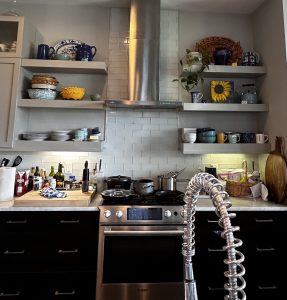
Can you spot the Pitchers?
I also have open shelving in my kitchen that I like to decorate for the different seasons. In summer, I have a sunflower theme throughout my open plan kitchen/ living room/lounge area. A few things do not change with the seasonal decor. And that is the abundance of PITCHERS on these shelves! From where I sit writing, I can see five different water pitchers and a lovely enamel tea kettle! These are VISUAL reminders to me of the ABUNDANCE of GOD! I want to catch and receive that ABUNDANCE and LIVE in it rather than living in the land of NOT ENOUGH!
What reminds you of the ABUNDANCE of GOD?
It might be the abundant harvest from your garden, a fresh cut bouquet of flowers, or picking berries at a local field.
Take some time to consider how you are living in the land of not enough and how you can practice living in the land of GOD’s ABUNDANCE this week.
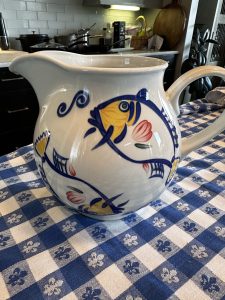
Receive the Abundance!
Put out a PITCHER as a reminder that Jesus wants to fill your life with Good Things! Jesus came that we might have LIFE and have it in ABUNDANCE!
The thief comes only to steal and kill and destroy. I came that they may have life and have it abundantly. JESUS
It’s hard to believe that we are almost half way through the year and that the summer solstice is now behind us. I love this season of long warm evenings and early morning wanders in the garden and make the most of the opportunities to drink in the beauty of God’s world and the wonder of all I see around me. Unfortunately, we are one of the few places in the U.S. that has had pleasant temperatures this week. Many of you are caught under the dome of intense heat scorching the U.S. and Canada. For some it followed devastating floods. My heart goes out to all those who are caught in the extreme weather conditions caused by climate change, not just on this continent, but all over the world.
This week has been a bit of a roller coaster for me. I started with a wonderful weekend getting my garden in order and admiring the slow growth of our tomatoes, squash and onions. I transplanted basil and pulled morning glory (bindweed) like fury. Did you know it can grow 12 inches in a day and burrows up to 20 feet below the ground? No wonder it seems ready to take over the world. I established new spiritual practices that will guide me through the summer and got caught up on correspondence I ignored while we were in Britain. So much to give thanks for.
However, yesterday I heard from my family that my oldest brother, who has been struggling with malignant melanoma for the last few years was admitted to hospital yesterday and the prognosis is not good. I appreciate your prayers. This is when it is very hard to have one’s family half a world away. As well as that, our 7 year old dog Goldie has a cancerous growth that I have a consultation about today. I expect surgery to be scheduled in the next couple of weeks. When life throws challenges like these at us, the comfort of faith makes a profound difference.
I find that the solstice celebrations are increasingly important to me, one of the anchors that helps to give my life stability in the increasing challenges of my personal life as well as of society as a whole. This week in Meditation Monday: Celebrating the Solstice Through Our Heritage. I look at some of the traditions for celebrating that come from my Greek heritage. Exploring these was both fascinating and encouraging. I heartily recommend that you too consider exploring your heritage to see what neglected traditions you could benefit from. The audio for this post is available through Substack for paid subscribers.
Last Wednesday we posted our tenth Liturgical Rebels Episode, a fascinating interview with Naomi Lawrence. I heartily recommend this episode to you, and if you have not yet connected to The Liturgical Rebels perhaps you would like to use the summer to get caught up. Check out all the interviews including Brian McLaren, Shane Claiborne and Scott Erickson here.
Many of you may have noticed that Godspacelight had very few posts this week. Many of our authors are taking a well deserved break after using their skills and their insights to sustain us through the onerous challenges of COVID. However you might like to check out a few past posts that are particularly pertinent to this season of the year. First, in case you missed St John the Baptist’s Day on June 24th, here is an excellent post Increase and Decrease, St John and the Summer Solstice by Jan Blencowe. As she says “This alignment of holy remembering and natural phenomenon is no accident.”
I love Lilly Lewin’s Freerange Friday Intentional Summer from last year. Her question “What will you need to do to actually feel refreshed by September, rather than more used up or burned out?” It is particularly thought provoking and her suggestions are excellent. I also recommend her Creating a Centerpiece for Summer Prayer. She is always so creative and helpful in her suggestions.
For another kind of intentionality, read Lisa De Rosa’s post Enjoying Summer with Creation Care in Mind. She challenges me to think through the environmental impact of each item I use over the summer and how I can choose to lessen my ecological footprint. A challenging and important post especially as climate change makes many of us very aware of our environmental impact.
If you are looking for a prayer to help orient you through the summer, I suggest this Litany for Summer by Fran Pratt.
You might also like to consider the importance of hospitality over the season, which for me his one of the most important aspects of the season. My favourite post which I love to reread and reflect on over the season is my Meditation Monday: Learning Hospitality from Psalm 23. https://godspacelight.com/
As you prepare for a new season, it is always good to plan and move with intentionality into the new joys and sorrows that it holds.
As you can imagine, Australia, the Southern Hemisphere and the dark of winter are very much on my mind even though here in Seattle we are entering summer. I thought I would share this prayer by Brother David Steindl-Rast for the winter solstice.
May you grow still enough to hear the small noises earth makes in preparing for the long sleep of winter, so that you yourself may grow calm and grounded deep within.
May you grow still enough to hear the trickling of water seeping into the ground, so that your soul may be softened and healed, and guided in its flow.
May you grow still enough to hear the splintering of starlight in the winter sky and the roar at earth’s fiery core.
May you grow still enough to hear the stir of a single snowflake in the air, so that your inner silence may turn into hushed expectation.
Many blessings on you and yours
Christine Sine
As an Amazon Associate, I receive a small amount for purchases made through appropriate links.
Thank you for supporting Godspace in this way.
When referencing or quoting Godspace Light, please be sure to include the Author (Christine Sine unless otherwise noted), the Title of the article or resource, the Source link where appropriate, and ©Godspacelight.com. Thank you!


